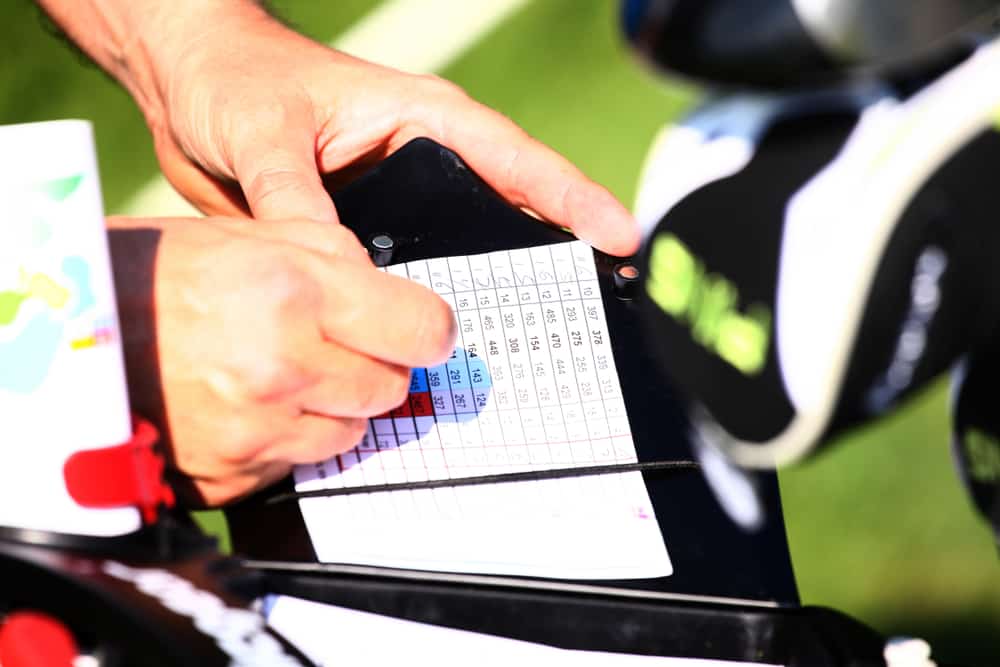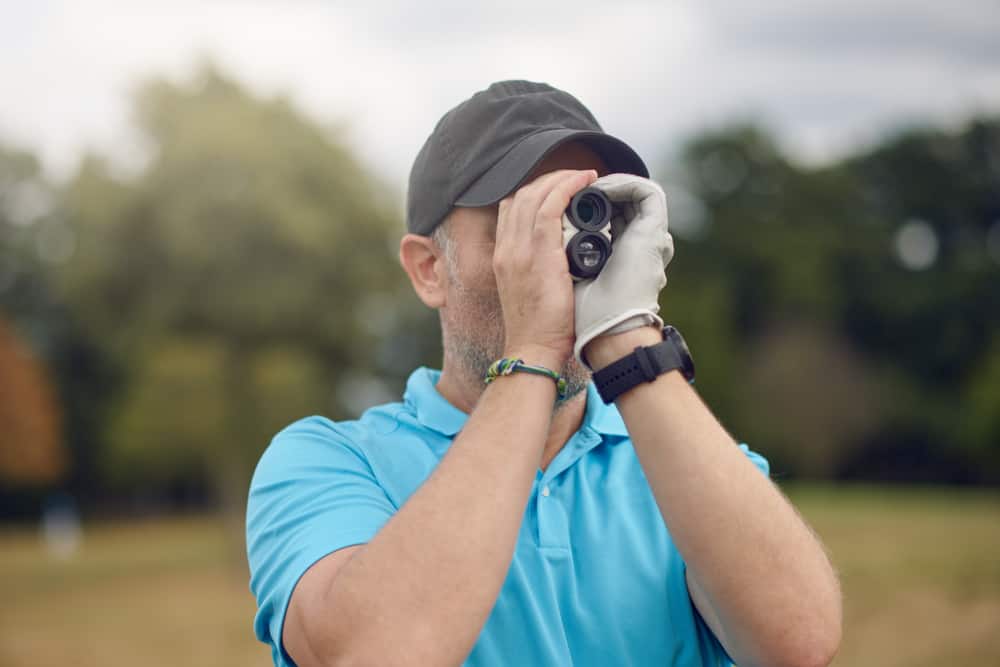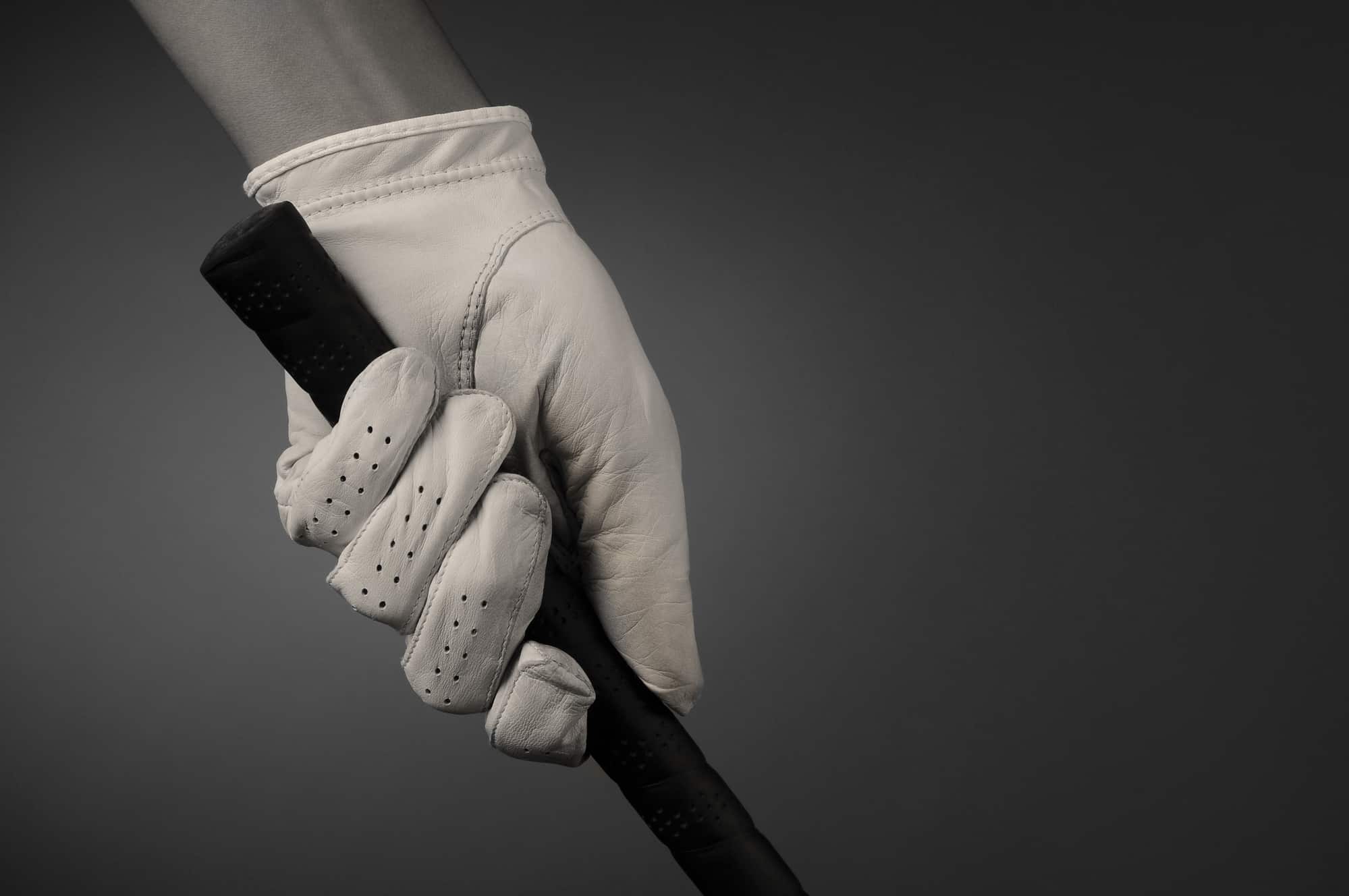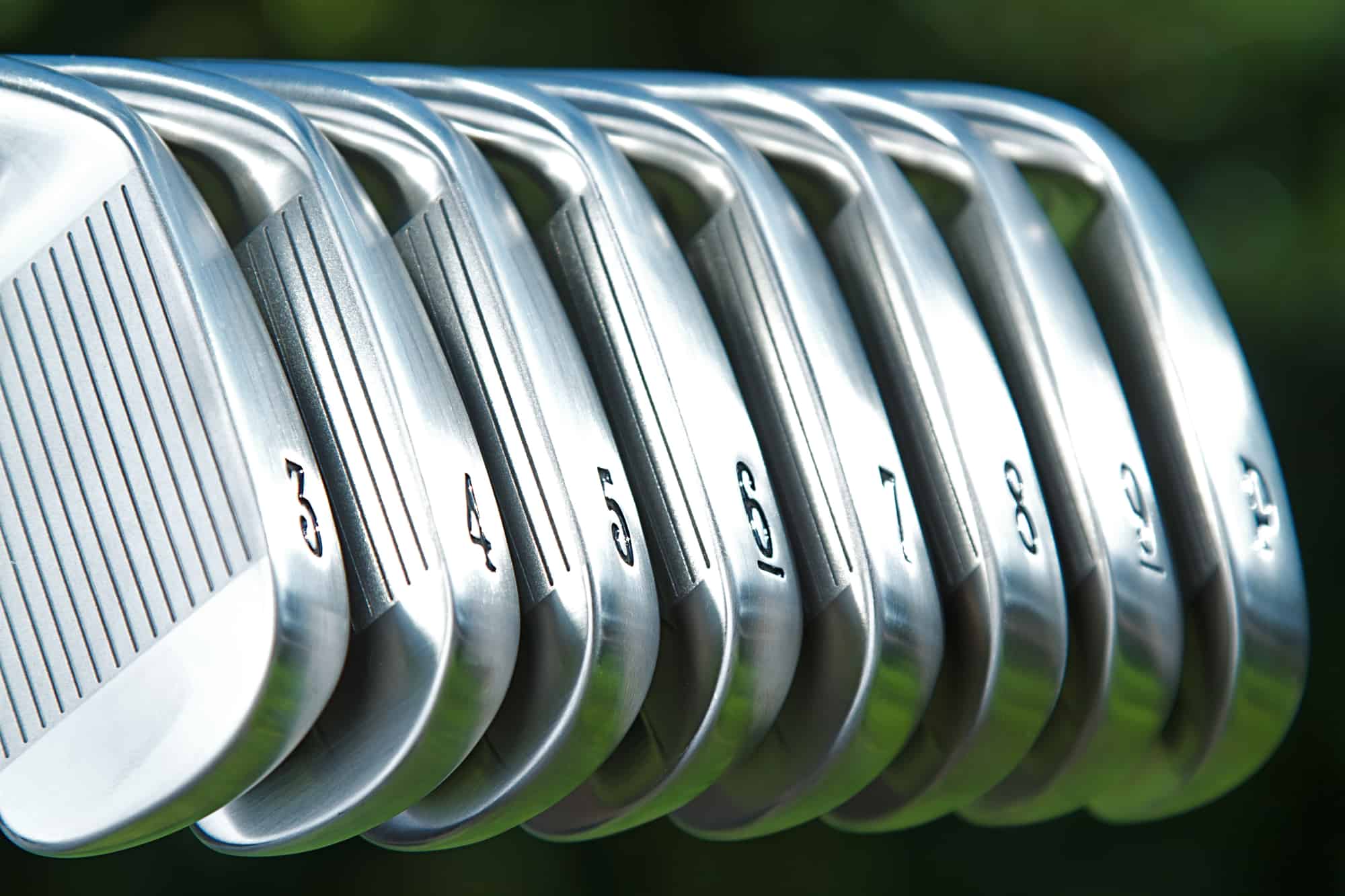
If you enjoy watching golf on the television, you may notice interesting little facts about the players and their mannerisms and routines.
One thing that stands out as being pretty clear is the way they carry their scorecards.
Many golfers are going to have a scorecard that looks a bit different than the one you use when you play your round.
If you have ever wondered about how and why a golfer holds their scorecard the way they do, we have all the answers for you.
We have all the insider information about the scorecard holder the pros are using and how you can get your hands on one.
Golf Scorecard Holder Pros Use
The scorecard holder that golf pros use is really a yardage book cover.
These are typically made of leather, and they will accommodate both the scorecard and the yardage book.
For professionals to have access to both the scorecard and the yardage book, these leather covers are going to come in quite handy.
Even though a professional has quite a bit that is done for them by their caddy, it is important that they take care of their own score.
Caddies also give yardages, but as you will notice, the players almost always check the yardages and make sure that they are accurate for them as well.
There is quite a bit riding on hitting the golf ball the proper distance.
If a player thinks that yardage may not be accurate, they are not going to swing the club.
Golfers have to be fully confident in their measurements and decisions prior to swinging the club.
If you are wondering whether or not these special scorecard holders are worth it or necessary, let’s take a look at some of the benefits of the yardage book scorecard holder.
Benefits of a Yardage Book Scorecard Holder
If you watched the most recent Masters Tournament in April, you likely saw Will Zalatorius with his yardage book hanging out of his back pocket.
He has a large book, and it sticks up almost over his belt buckle.
The book is where he keeps track of his score and writes down information about the course that he finds valuable.
Some golfers are very particular about their yardage book and how it is kept.
Other players almost never look at the yardage book and simply record their score at the end of every hole.
Much of this comes down to player preference, and it goes beyond just getting the statistics.
Some players rely on their caddies to give them all the information, and they fully trust the numbers the caddies give them.
Here are just a few of the reasons a person may continue to open their yardage book up and get information from it.
1. Keep Track of Prior Rounds
Professional golfers come out to the golf course a few days before the event that starts on Thursday.
They spend this time working on their game and getting ready for the event.
During the practice rounds, players don’t play seriously to see what they can shoot, but they try and learn the golf course.
Golfers will put golf balls down all over the course and hit shots from many different locations.
They will write down information about extra wind and roll in certain areas.
The information on their scorecard will tell them things that they can then use during the actual event.
Keeping track of these practice rounds gives players a starting point of information for when they start the real rounds of the tournament.
Chances are they will have something recorded that will help them know exactly what club to hit and from where.
In addition, they will write down information about the slope of the greens and different pin placements so that they know how much the yardage will be impacted.
Players also have lots of yardages on the book itself that they are already able to see.
Yardage books are typically marked with lots of yardage information for each hole that is already recorded.
Things like trees, water hazards, and sand bunkers are all carefully marked so that you can find where you need to hit your shot to escape with the lowest score.
2. Distances to Hazards
The yardage book gives very detailed information about hazards.
Hazards are something that most people want to avoid at all costs.
When you hit a ball into a hazard, it will often cost you a penalty stroke.
Avoiding penalty strokes is genuinely the only way to compete and win on the professional golf tours.
Golfers will know precisely how far they have until their ball gets near a hazard, and they will plan their shots accordingly.
Distances to hazards a major reason you will see professional golfers continually looking in their yardage books to gather information.
3. Elevation Changes
Have you ever heard of a distance measuring device with slope?
These are golf rangefinders and GPS units that will give golfers the distance to the hole while incorporating it into the slope.
This means that if the green is down twenty feet, you will get a distance measurement that reflects this.
Without the slope formula calculation, you will have a hard time knowing how much the elevation can increase or decrease the length of your shot.
Elevation changes can be hard to memorize and keep track of.
Golfers who play on the PGA Tour are not allowed to use a rangefinder with a slope, so they need to test out different elevations.
During a practice round, a player may hit an eight iron off one tee to see how the elevation impacts the length of the shot.
Then he may also hit the seven and nine irons to understand the difference in distance and how it was impacted.
This will typically be recorded on the scorecard yardage book as a reason to club up or club down.
Overall, changes in elevation are something that you will find lots of information about in a yardage book scorecard holder.
4. Manual Recording of Statistics
In addition to keeping track of yardages and how they are impacted by the course around them, you can also record your statistics.
Many players like to know how many greens or fairways they hit during a round.
The better your statistics, the better your total score is going to be.
If, for instance, you two-putted every green, you are going to have more putts at the end of the day than you likely want.
The goal is to one-putt as many holes as possible to get a better score.
Next to the scorecard, players will often make a little chart that includes the greens in regulation, fairways hit, and a number of putts for the day.
Over time, players can learn a great deal about their golf game and what works and what doesn’t work based on their statistics.
You may find that you hit every fairway and miss every green.
Certainly, this shows that your iron game is quite weak.
If you have gotten to the point in your golf game where you are really ready to start scoring and shooting better, recording statistics is a smart thing to do.
5. History/Record of the Round
Another reason to keep a record of everything in your yardage book and scorecard holder is so that you have a history of the round.
Professional players will be able to see their score on the internet for the rest of their lives, but some sentimental golfers also like to keep the original scorecard from the day of the event.
For amateur golfers, keeping the scorecard allows you to have a record of the courses you play and keep that for future reference.
If you enjoy seeing how your game progresses and if you are getting better or worse at golf, keeping a history of your golf rounds will really help.
The yardage book/scorecard holder is a great way to do this and to keep everything organized and in one place.
Do All Golf Courses Offer Yardage Books?
Golf course yardage books do not exist for every golf course.
In fact, most golf courses do not have a yardage book.
Most of the time, you will find yardage books at high-end courses that will have spent the time and money to put the yardage book together.
When golfers play in PGA Tour events, there is almost always a yardage book available for them to work with.
Even with these yardage books in place, some pros and caddies will still create their own.
Golfers like Bryson DeChambeau will keep very detailed records of what they need on the course, and they may or may not do it in the yardage book provided.
You can make your own yardage book, but the process is lengthy, and it takes some golf knowledge and dedication.
If you find that a yardage book is necessary for your local course, talk to the professional staff and see if they have ever considered it.
There are some companies that can make yardage books now using GPS information and satellites.
They may not even need to come out to the local course and pace off the yardages.
Can PGA Professionals Use Rangefinders?

The general rule has been that PGA golfers cannot use rangefinders.
The rangefinder has been looked at as being a device that made golf easier, and that is not something that the USGA has wanted to do in the past.
At the PGA Championship, players were allowed to use rangefinders, and it was a pleasant surprise for many.
The rangefinders that they used were not allowed to have the slope functionality turned on.
Golfers who used the slope functionality could be banned from the event.
The rangefinders are still not allowed as part of every tournament, but you are likely going to start seeing them being used much more often.
As nice as it is to have the yardage, golfers still need to be able to hit the shots.
Therefore, it is being brought into consideration that simply being given the yardage is not all that is necessary to complete a great golf shot.
Conclusion
Golfers like to get as much information and technique from the professionals as they can.
It is thought that, if we follow what these players do and start to emulate how they are on the course, we can potentially become like them in the future.
The scorecard holder that pros use is just one way to elevate your game to the professional level.
Learn to keep track of distances and other information like the professionals, and eventually, you will end up being able to lower your scores the way they do.
Professional golfers tend to be somewhat methodical about how they play, and the reason behind this is that they need to repeat what they are doing to make money week in and week out.






Leave a Reply